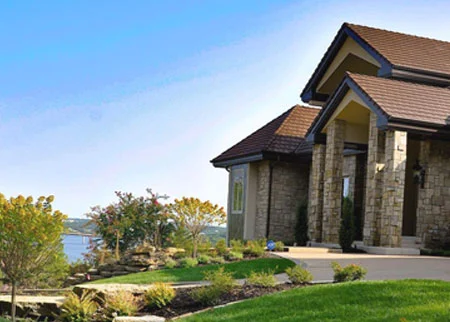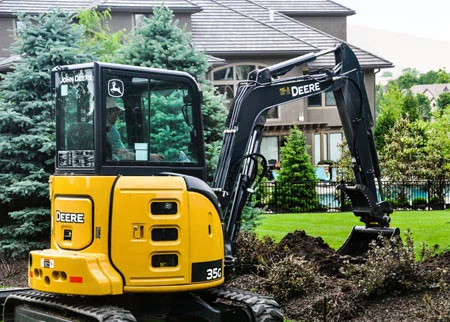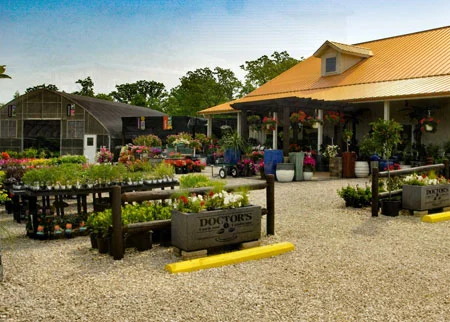Creating a captivating garden that flourishes year-round requires more than just a green thumb. Indeed, the secret to a truly stunning outdoor space lies in selecting the perfect plants to suit your unique needs and preferences. But with countless plant species, combinations, and considerations at play, where do you even begin? At Doctor’s Lawn and Landscape, we select our plants for very specific reasons and we are excited to help you navigate the world of plant selection and create the garden of your dreams!
Unlock the full potential of your garden by calling us at 913-423-9587. Let Doctor’s Lawn and Landscape with over 30 years of experience, transform your outdoor space into a botanical masterpiece that thrives year-round. With our expertise and your vision, we’ll cultivate a garden that not only flourishes but also becomes a living testament to the artistry of nature.
Our Customized Approach to Plant Selection in Kansas City
At Doctor’s Lawn and Landscape, we recognize that every garden in Kansas City is as unique as its owner. That’s why we take a customized approach to plant selection, ensuring that our clients’ preferences, site conditions, and native plants are all taken into consideration, with a specific focus on the unique climate and soil conditions in Kansas City. Once we comprehend your gardening vision and evaluate factors like sunlight, soil type, and drainage specific to the Kansas City region, we are equipped to assist you in choosing suitable plants. This results in a breathtaking outdoor space that flourishes harmoniously with its environment and thrives in the distinctive climate of Kansas City.
Understanding Client Preferences
A garden’s success in Kansas City largely depends on the compatibility between plants and the region’s environment. Assessing site conditions such as sunlight, soil type, and drainage specific to Kansas City is important in ensuring that your chosen plants will flourish. For instance, understanding the soil composition prevalent in Kansas City, which can be clayey or loamy, and considering the unique climate patterns, allows us to recommend plants that are well-suited to these conditions. Spending time to study the unique characteristics of your garden in Kansas City equips us to assist you in choosing plants that will flourish, contributing to a healthy and vibrant landscape tailored to the local climate.
Evaluating Site Conditions
A garden’s success largely depends on the compatibility between plants and their environment. Assessing site conditions such as sunlight, soil type, and drainage is important in ensuring that your chosen plants will flourish. For instance, a flowering dogwood may struggle in alkaline soil, while a white pine could suffer in an area with poor drainage.
Spending time to study the unique characteristics of your garden equips us to assist you in choosing plants that will flourish, contributing to a healthy and vibrant landscape.
Incorporating Native Plants for the Kansas City Ecosystem
Incorporating native plants into your garden in Kansas City not only adds a sense of authenticity and connection to the local ecosystem but also provides numerous benefits specific to the region. Native plants in Kansas City are well-adapted to the local climate and soil, making them hardier and more resilient in the face of the unique weather conditions experienced in this area. They also attract local wildlife, such as the diverse bird species and butterflies native to Kansas City, promoting a healthy and sustainable ecosystem that is in harmony with the climate and soil of the region.
Mastering the Art of Plant Combinations
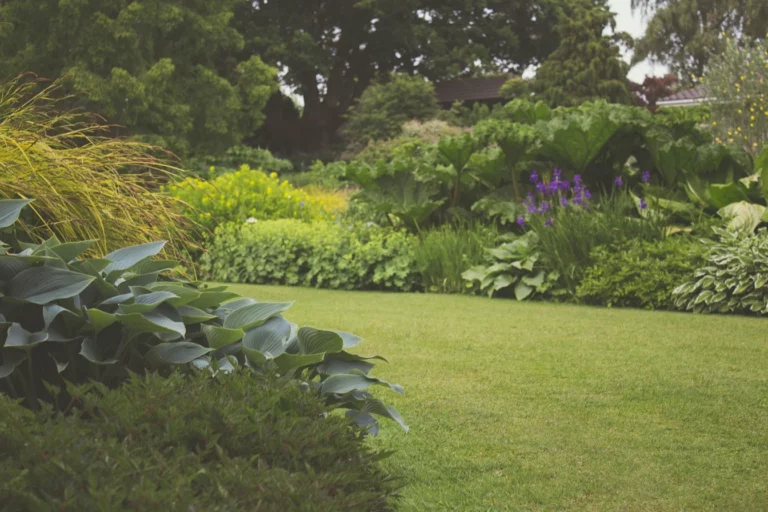 A visually stunning garden is all about striking the right balance and harmony in plant combinations. You can create a dynamic and captivating landscape that delights the senses all year round by skillfully contrasting plant heights and foliage, combining different flower types and bloom periods, and maintaining interest during winter. The key is to play with textures, colors, and forms, crafting a garden that tells a story and evokes emotion as it unfolds through the seasons.
A visually stunning garden is all about striking the right balance and harmony in plant combinations. You can create a dynamic and captivating landscape that delights the senses all year round by skillfully contrasting plant heights and foliage, combining different flower types and bloom periods, and maintaining interest during winter. The key is to play with textures, colors, and forms, crafting a garden that tells a story and evokes emotion as it unfolds through the seasons.
Contrasting Heights and Foliage
One of the most effective ways to create visual interest and depth in your garden is to combine plants with varying heights and foliage textures. Imagine tall, graceful ornamental grasses swaying in the breeze, contrasting with the bold, architectural forms of broadleaf evergreens and the dense foliage of other plants.
Picture a garden bed where delicate ferns playfully intermingle with robust, flowering perennials. Creating a visually stimulating landscape that encourages exploration and discovery can be achieved by thoughtfully arranging landscape plants of varying sizes and silhouettes.
Mixing Flower Types and Bloom Times
A garden that bursts with color and life throughout the season is truly a sight to behold. Guaranteeing a continuous floral display from spring to fall can be achieved by choosing plants with varying bloom periods. Consider pairing early bloomers like tulips and daffodils with summer stars such as daylilies and coneflowers, followed by autumn showstoppers like chrysanthemums and asters.
This thoughtful approach to plant selection not only keeps your garden looking fresh and vibrant but also provides a constant source of nectar for pollinators.
Adding Winter Interest
While a garden’s beauty often shines brightest during the warmer months in Kansas City, there’s no reason to let it fade away in the winter. Adding winter interest to your landscape in the Kansas City region can be as simple as incorporating evergreen plants, which provide structure and color even when the mercury drops in this specific climate. Consider also including plants with interesting seed heads, bark, or berries that can catch the frost and glisten in the winter sun unique to Kansas City.
Selecting plants that offer visual appeal throughout the year with forethought can result in a garden that transcends the seasons in the Kansas City area. Understanding the winter conditions in this region, including potential frost and temperature fluctuations, allows us to recommend plants that not only survive but thrive during the winter months. The selection of evergreen plants that can maintain their lush appearance despite the colder temperatures in Kansas City becomes a key element in creating a landscape that remains visually appealing year-round.
By incorporating plants with interesting seed heads, bark, or berries that showcase their beauty in the winter sun of Kansas City, we add depth and character to your garden during the colder months. The consideration of plant features that withstand the unique winter conditions in this area contributes to a landscape that remains vibrant and engaging, enhancing the visual interest of your outdoor space throughout the entire year.
Balancing Sunlight and Shade Requirements
Just as location is key in real estate, sunlight, and shade play a pivotal role in determining a plant’s success in your garden in Kansas City. Ensuring each plant receives the optimal amount of light for growth and development can be achieved by carefully choosing plants based on their sunlight and shade requirements, considering the specific climate and light conditions of the Kansas City region.
From sun-loving varieties that thrive in the glow of the Kansas City sun to shade-tolerant options that flourish in dappled light, achieving the right balance between sunlight and shade is essential to cultivating a radiant and harmonious garden in this unique climate. Understanding the sunlight patterns in Kansas City, including potential temperature variations, allows us to recommend plants that not only survive but thrive in the local conditions.
Full Sun Plants
For plants in Kansas City that require ample direct sunlight, full sun is a must. These sunlight-loving plants often boast vibrant colors and lush foliage, making them a visually striking addition to any garden in the Kansas City region. However, it’s important to ensure that they receive sufficient water and nutrients to cope with the intense sunlight and heat specific to this area.
Properly caring for your full-sun plants in Kansas City enables you to have a vibrant and thriving garden that enjoys the full glow of the sun while considering the unique conditions of the local climate.
Partial Shade Plants
Partial shade plants that can tolerate a mix of sun and shade are a versatile choice for gardens in Kansas City with varying light conditions. These adaptable plants often showcase an array of fascinating colors and textures, adding depth and interest to your garden in the context of Kansas City’s climate.
To ensure their success in Kansas City, provide them with well-drained soil, ample water, and protection from harsh afternoon sun. With proper care and guidance from Doctor’s Lawn and Landscape, your partial shade plants in Kansas City can bring a touch of beauty and tranquility to your garden while considering the specific conditions of the local environment.
Shade-Tolerant Plants
Partial Shade Plants in Kansas City
Partial shade plants that can tolerate a mix of sun and shade are a versatile choice for gardens in Kansas City with varying light conditions. These adaptable plants often showcase an array of fascinating colors and textures, adding depth and interest to your garden in the context of Kansas City’s climate.
To ensure their success in Kansas City, provide them with well-drained soil, ample water, and protection from harsh afternoon sun. With proper care and guidance from Doctor’s Lawn and Landscape, your partial shade plants in Kansas City can bring a touch of beauty and tranquility to your garden while considering the specific conditions of the local environment.
Shade-Tolerant Plants Thriving in Kansas City Gardens
For gardens in Kansas City with limited sunlight, shade-tolerant plants that are well-adapted to low-light conditions can transform even the darkest corners of your garden into a lush and inviting oasis.
By understanding their unique needs and providing the right growing conditions in Kansas City, you can cultivate a thriving shade garden that delights the senses while taking into account the local climate and sunlight patterns.
Factoring in Hardiness Zones and Soil Types
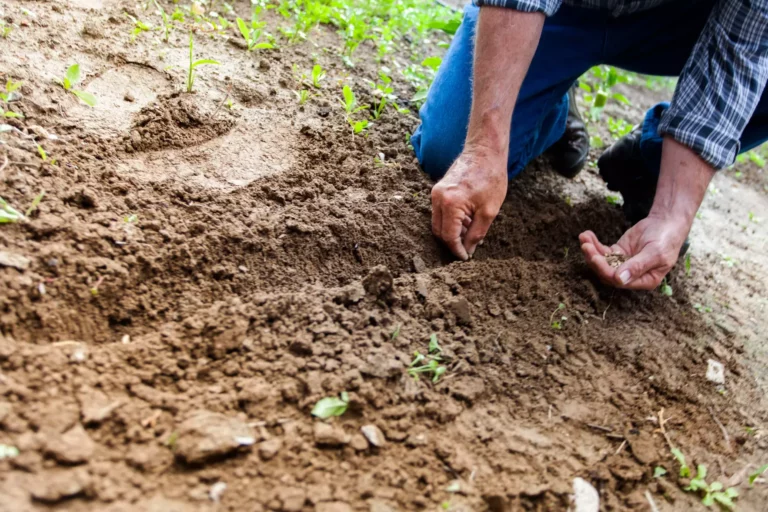 Creating a successful garden requires more than just selecting plants based on their visual appeal. It’s crucial to also consider factors such as hardiness zones and soil types, which can greatly influence a plant’s ability to thrive in your garden.
Creating a successful garden requires more than just selecting plants based on their visual appeal. It’s crucial to also consider factors such as hardiness zones and soil types, which can greatly influence a plant’s ability to thrive in your garden.
Comprehending the unique requirements of each plant and aligning your garden’s conditions with their needs allows you to create a stunning landscape. This not only looks beautiful but also flourishes in harmony with its surroundings.
Hardiness Zone Considerations
Choosing plants that are suitable for your area’s hardiness zone is essential to ensuring their survival and success. Hardiness zones, defined by the USDA Plant Hardiness Zone Map, indicate the average annual minimum temperature of a region, providing a valuable guide for selecting plants that can withstand local climates.
Choosing plants well-adapted to your zone allows for a garden that is visually stunning, resilient, and enduring.
Soil Testing and Amendments
The secret to a thriving garden lies beneath the surface: your soil. Testing your soil and making necessary amendments can create an ideal environment for your chosen plants. By understanding your soil’s nutrient levels, pH, and texture, you can select plants that are best suited to your garden’s conditions and make appropriate amendments to ensure optimal growth.
With a solid foundation, your garden can flourish and thrive, providing a beautiful and healthy outdoor space for you to enjoy.
Prioritizing Low-Maintenance Plants
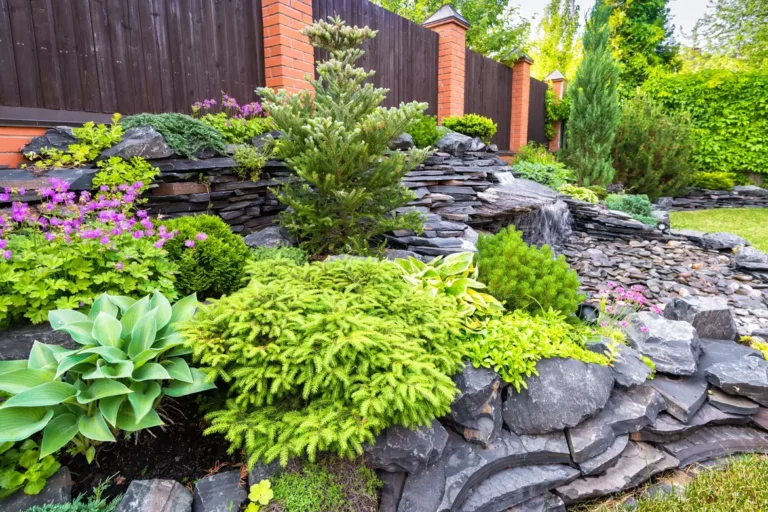
A beautiful garden doesn’t have to demand constant attention and care. Prioritizing low-maintenance plants enables you to have a stunning landscape that is both visually appealing and time-efficient. Drought-tolerant options, pest-resistant varieties, and easy-care perennials, shrubs, and trees can all provide long-lasting beauty with minimal upkeep.
So go ahead and enjoy the fruits of your labor without spending all your free time tending to your plants.
Drought-Tolerant Options
Drought-tolerant plants, such as succulents and ornamental grasses, are a fantastic choice for low-maintenance gardens. These hardy plants require minimal watering, making them not only easy to care for but also eco-friendly by conserving water. With their unique forms and textures, drought-tolerant plants can add visual interest and depth to your garden while requiring little attention, leaving you more time to enjoy your outdoor space.
Pest-Resistant Varieties
Pest-resistant plants are a boon for any garden, as they can help reduce the need for chemical treatments and maintenance. By selecting plant species that are resistant to common pests, you can minimize the chances of infestations and the need for frequent pest control measures. This not only simplifies your garden maintenance tasks but also promotes a healthier and more endurable landscape.
Easy-Care Perennials, Shrubs, and Trees
There’s no shortage of beauty in easy-care perennials, deciduous trees, shrubs, and other low-maintenance plants. These plants provide long-lasting charm with minimal effort, allowing you to enjoy your garden without investing countless hours in upkeep.
By using Doctor’s Lawn and Landscape’s guidance to select plants, including certain plants that are both visually appealing and easy to care for, you can create a garden that is not only stunning but also a pleasure to maintain. To achieve this, it’s important to choose plants wisely and tend to your plants carefully, as plants serve various purposes in a garden.
Avoiding Invasive Species
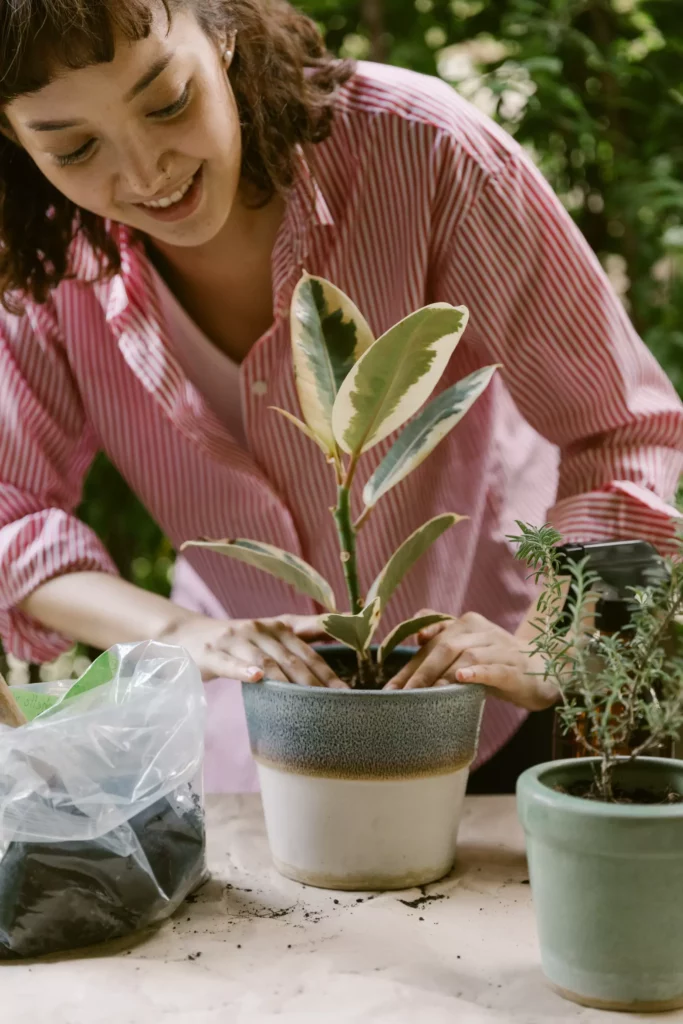 Invasive plant species can wreak havoc on local ecosystems in Kansas City and require extensive maintenance to control. Preventing the unintended consequences of introducing invasive species to your garden involves identifying harmful plants and opting for eco-friendly alternatives that are well-suited to the specific conditions of the Kansas City region.
Invasive plant species can wreak havoc on local ecosystems in Kansas City and require extensive maintenance to control. Preventing the unintended consequences of introducing invasive species to your garden involves identifying harmful plants and opting for eco-friendly alternatives that are well-suited to the specific conditions of the Kansas City region.
Choosing the right plant, whether native or non-invasive, allows you to create a garden with plants that are native to your Kansas City region, ensuring healthy plants that are both beautiful and responsible.
Identifying Invasive Plants in the Kansas City Context
Invasive plants can be challenging to identify, as they often blend in with native flora and may even appear harmless at first glance. However, these plants can quickly dominate a landscape in Kansas City and outcompete native plants for resources, leading to a decline in biodiversity and the disruption of local ecosystems.
With the help from Doctor’s Lawn and Landscape on invasive plant species specific to the Kansas City region and learning to identify them, you can prevent these harmful plants from taking root in your garden and causing lasting damage to the local ecosystem.
Attracting Pollinators and Wildlife
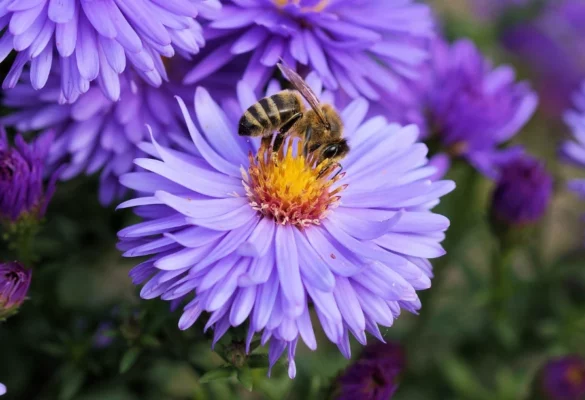 A garden teeming with life is a true testament to its beauty and vitality. Creating an inviting haven for pollinators and wildlife can be achieved by incorporating bee-friendly flowers, bird-attracting plants, and butterfly gardens. These plants not only add visual interest and color to your garden, but they also support a healthy ecosystem by providing food and shelter for various species.
A garden teeming with life is a true testament to its beauty and vitality. Creating an inviting haven for pollinators and wildlife can be achieved by incorporating bee-friendly flowers, bird-attracting plants, and butterfly gardens. These plants not only add visual interest and color to your garden, but they also support a healthy ecosystem by providing food and shelter for various species.
As you watch your garden come to life with the flutter of wings and the buzz of bees, you’ll know that you’ve created a truly special space.
Bee-Friendly Flowers
Bees are essential pollinators that play a critical role in the health and productivity of our gardens. By planting bee-friendly flowers like hollyhocks, verbascum, and liatris, you can provide a valuable source of nectar and pollen for these industrious insects.
Not only will these flowers attract a host of buzzing visitors, but they will also contribute to the overall health and beauty of your garden.
Bird-Attracting Plants
 Birds bring a sense of life and energy to any garden, and attracting them is as simple as selecting the right plants. By incorporating plants that produce berries, seeds, or nectar, you can provide food and shelter for a variety of bird species.
Birds bring a sense of life and energy to any garden, and attracting them is as simple as selecting the right plants. By incorporating plants that produce berries, seeds, or nectar, you can provide food and shelter for a variety of bird species.
As you watch these winged visitors flit and sing among the branches, you’ll know that your garden has become a sanctuary for both you and the local wildlife.
Butterfly Gardens
Creating a butterfly garden is a delightful way to invite these delicate, colorful creatures into your outdoor space. By planting nectar-rich flowers and providing host plants for caterpillars, you can support the entire life cycle of these beautiful pollinators.
As you watch butterflies gracefully dance among the blooms, you’ll know that your garden is a haven for these enchanting insects and a source of endless enjoyment for you and your family.
How Doctor’s Lawn and Landscape Can Help You
At Doctor’s Lawn and Landscape, we appreciate that the creation and maintenance of a beautiful garden combines art and science. Our expert team with over 30 years of experience is here to help guide you through the process, offering personalized advice, customized plant selection, and professional landscaping services to bring your vision to life. Whether you’re starting from scratch or looking to enhance your existing outdoor space, we are here to support you every step of the way in the Kansas City Metro area.
Contact us today at 913-423-9587 or visit https://doctorslawn.com/ for more information.
Frequently Asked Questions
How are plants selected?
Plant selection is an organized process involving several considerations such as function, aesthetics, site adaptability, and management. To choose a type of plant, the characteristics of the site and the intended purpose must be taken into account. Aesthetic considerations may include growth habit, season and color of bloom, foliage color, texture, and shape, and winter interest of bark, fruit, or structure.
How can I create a visually stunning garden with plants of varying heights and foliage textures?
Create visual interest and depth in your garden by combining plants with varying heights and foliage textures, such as ornamental grasses and broadleaf evergreens.
What plants are suitable for partial shade?
Hydrangeas, azaleas, and camellias are all suitable for partial shade.
How can I attract pollinators and wildlife to my garden?
Attract pollinators and wildlife to your garden by incorporating bee-friendly flowers, bird-attracting plants, and butterfly gardens.

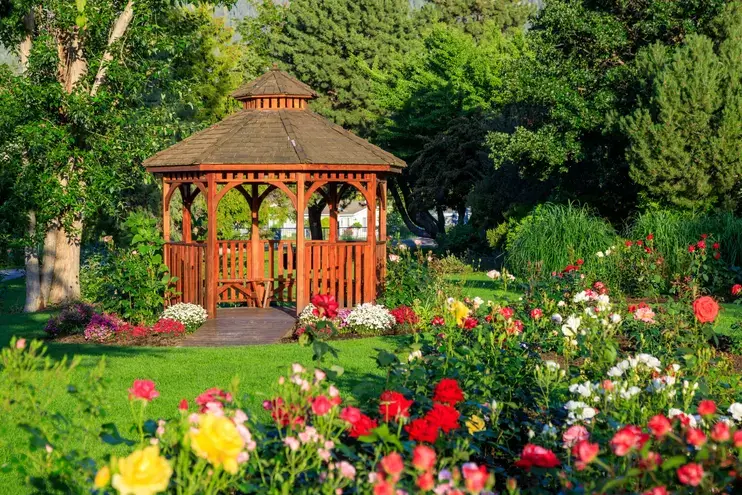
 A visually stunning garden is all about striking the right balance and harmony in plant combinations. You can create a dynamic and captivating landscape that delights the senses all year round by skillfully contrasting plant heights and foliage, combining different flower types and bloom periods, and maintaining interest during winter. The key is to play with textures, colors, and forms, crafting a garden that tells a story and evokes emotion as it unfolds through the seasons.
A visually stunning garden is all about striking the right balance and harmony in plant combinations. You can create a dynamic and captivating landscape that delights the senses all year round by skillfully contrasting plant heights and foliage, combining different flower types and bloom periods, and maintaining interest during winter. The key is to play with textures, colors, and forms, crafting a garden that tells a story and evokes emotion as it unfolds through the seasons. Creating a successful garden requires more than just selecting plants based on their visual appeal. It’s crucial to also consider factors such as hardiness zones and soil types, which can greatly influence a plant’s ability to thrive in your garden.
Creating a successful garden requires more than just selecting plants based on their visual appeal. It’s crucial to also consider factors such as hardiness zones and soil types, which can greatly influence a plant’s ability to thrive in your garden.
 Invasive plant species can wreak havoc on local ecosystems in Kansas City and require extensive maintenance to control. Preventing the unintended consequences of introducing invasive species to your garden involves identifying harmful plants and opting for eco-friendly alternatives that are well-suited to the specific conditions of the Kansas City region.
Invasive plant species can wreak havoc on local ecosystems in Kansas City and require extensive maintenance to control. Preventing the unintended consequences of introducing invasive species to your garden involves identifying harmful plants and opting for eco-friendly alternatives that are well-suited to the specific conditions of the Kansas City region. A garden teeming with life is a true testament to its beauty and vitality. Creating an inviting haven for pollinators and wildlife can be achieved by incorporating bee-friendly flowers, bird-attracting plants, and butterfly gardens. These plants not only add visual interest and color to your garden, but they also support a healthy ecosystem by providing food and shelter for various species.
A garden teeming with life is a true testament to its beauty and vitality. Creating an inviting haven for pollinators and wildlife can be achieved by incorporating bee-friendly flowers, bird-attracting plants, and butterfly gardens. These plants not only add visual interest and color to your garden, but they also support a healthy ecosystem by providing food and shelter for various species. Birds bring a sense of life and energy to any garden, and attracting them is as simple as selecting the right plants. By incorporating plants that produce berries, seeds, or nectar, you can provide food and shelter for a variety of bird species.
Birds bring a sense of life and energy to any garden, and attracting them is as simple as selecting the right plants. By incorporating plants that produce berries, seeds, or nectar, you can provide food and shelter for a variety of bird species.